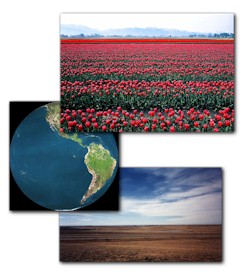The
conservation of the environment where we produce is an essential
objective to define our productive policies. By means of several
indicators, CIA controls the effects that the different procedures,
agrochemicals and productive layouts generate on the environment,
trying hard to improve year after year.
The indicators taken into account are:
< the consumption of fossil combustible substances
and its effectiveness considering the units of combustible substances
used in proportion to the obtained production.
< the balance of the soil nutrients that results from
the difference between the consumption absorbed by the plants
and the incorporation of nutrients either naturally or artificially.
< the probabilities of contamination due to the use of chemicals.
< the balance of the gases of the greenhouse effect.
Our
programme of Environmental Policy gains more relevance, considering
that, being Argentina a country with scarce issues of carbon
dioxide, large volumes of methane and nitrous oxide are issued/
poured. These gases are all together responsible of about 80
% of the contribution of Argentina to the global warming, and
it is estimated that 85% of the methane issued comes from the
cattle-farming sector ( methane issued by the rumiants, bovine
cattle) and 95% of nitrous oxide issues from agricultural sector
(resulting from nitrogenous fertilization).
In
order to get a reference of the effect of the issues of these
two gases on the planet, we have to consult the PCG (Potential
of Global Warming) set by the Intergovernmental Panel for a
climatic change (IPCC) in 1994.
|
TYPES
OF GASES
|
CHEMICAL
SYMBOLS
|
PCG
( Potential of
Global Warming )
|
|
Carbon
Dioxide
|
CO2
|
1
|
|
Methane
|
CH4
|
21
|
|
Nitrous
Oxide
|
N2O
|
310
|
|
Hexafluoride
of sulfur
|
SFC
|
23,900
|
|
Hydrofluoridecarbons
|
HFC
|
140-11,700
|
|
Perfluoridecarbons
|
PFC
|
6,500-9,200
|
*
Origin: the conditions to launch the market of carbon in Argentina.
* Corn Exchange in Buenos Aires (2001)
From
these estimates, it can be deduced that the contribution of
Methane to the greenhouse effect is 21 times higher than that
of the Carbon Dioxide, and that the contribution of Nitrous
Oxide is 310 times higher.
The knowledge of this information by the producers is fundamental
to protect our environment and to be able to project a long
term productivity.
( for more detailed information: www.bolcereales.com.ar)

